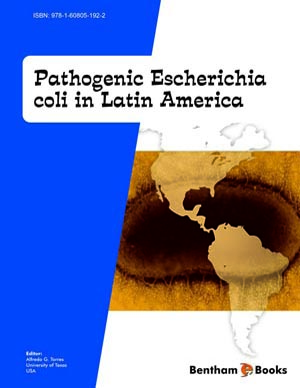Abstract
The emergence and evolution of pathogenic Escherichia coli strains associated with diarrheal diseases have become a topic of active investigation in recent years due to the emergence of more virulent strains and the association of new serotypes with disease. Outbreak studies indicate that most patients with an intestinal E. coli infection develop mild, uncomplicated diarrhea. However, a significant risk exists that infections caused by highly virulent E. coli isolates, such as the enterohemorrhagic E. coli O157:H7, develop into serious and potentially lifethreatening complications, such as hemolytic uremic syndrome. The relative contribution of recombination events in the generation of new categories of pathogenic E. coli varies among the E. coli population, and it is represented by the wide variety of mobile elements found in different diarrheal strains (e.g. pathogenicity islands, phages, transposons, pathoadaptive mutations, etc). Understanding the population structure of pathogenic E. coli is important, since it impacts the effectiveness of molecular epidemiological studies. Such studies are needed to understand the increasingly recognized diversity of enterotoxigenic E. coli, a leading cause of pediatric and travelers’ diarrhea. In addition, factors underlying the emergence of enteroaggregative and atypical enteropathogenic E. coli strains associated with persistent diarrhea are unknown. Horizontal transfer of genetic elements that affect virulence of diarrheagenic E. coli strains and changes in global agricultural processes, as well as movement of humans and animals, may contribute to the complex natural history of diarrheagenic E. coli.


